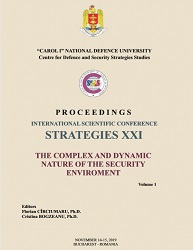CAMOUFLAGE, CONCEALMENT AND DECEPTION
IN MILITARY OPERATIONS
CAMOUFLAGE, CONCEALMENT AND DECEPTION
IN MILITARY OPERATIONS
Author(s): Ciprian Tudor
Subject(s): Politics / Political Sciences, Security and defense, Military policy, Peace and Conflict Studies
Published by: Carol I National Defence University Publishing House
Keywords: camouflage; concealment; deception, imagery; intelligence; military operations; hiding; blending; disguising; disrupting; decoying.
Summary/Abstract: One of the imperatives of military doctrine is to conserve combat power or decisive action. Such conservation is aided through sound operations security (OPSEC) and protection against attack. Camouflage, concealment and Deception (CCD) is an essential part of operations, ranging from tactical to strategic levels. It must be integrated into METTTC analyses and the IPB process at all echelons. CCD is a primary consideration when planning OPSEC. The skillful use of CCD tactics, techniques and procedures (TTPs) is necessary if a combat formation is to conceal itself and survive. A general knowledge of CCDTTPs also allows friendly troops to recognize CCD when the enemy uses it. CCD degrades the effectiveness of enemy intelligence, surveillance, reconnaissance and target acquisition(ISTAR) capabilities. Preventing detection impairs enemy efforts to assess friendly operational patterns, functions, and capabilities. Improved survivability from CCD is not restricted to combat operations. Benefits are also derived by denying an enemy the collection of information about friendly forces during peacetime, as well as in crisis and wartime.
- Page Range: 350-361
- Page Count: 12
- Publication Year: 2019
- Language: English
- Content File-PDF

